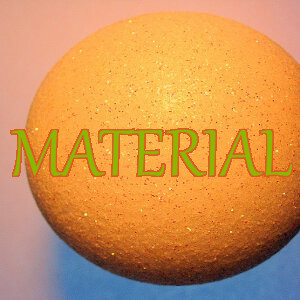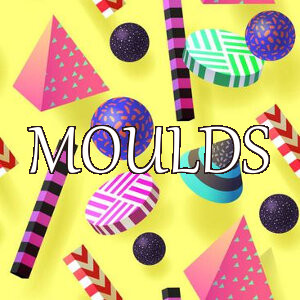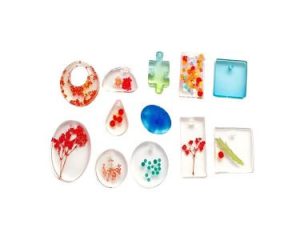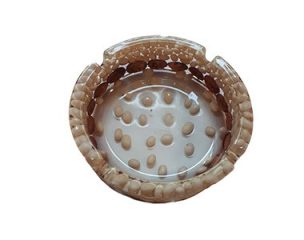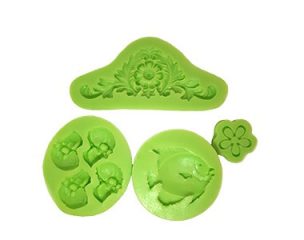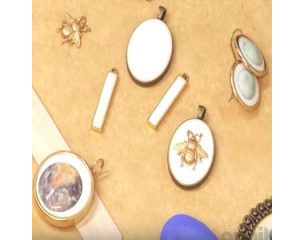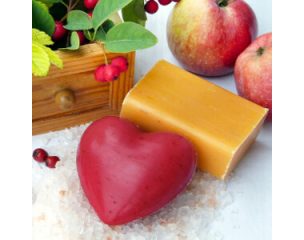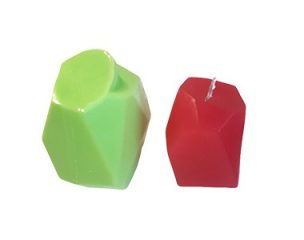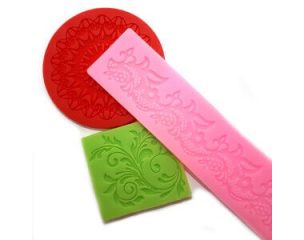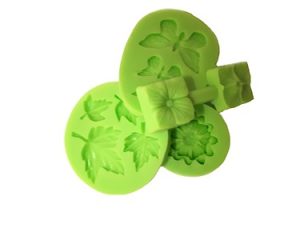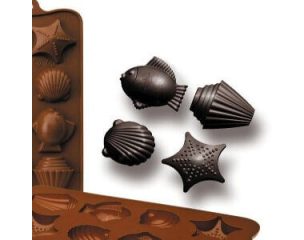Forms
Every object has a shape!
Besides the functionality the form is probably the most important characteristic of an object that you have to consider while you construct a product.
Let it be a cake, a biscuit, a home-made jewel or any innovative self-made products, mock-ups etc., we always need a negative shape, a mould to replicate the product.
The one-of manufacturing is extremely time consuming and very costly. But with moulds the replication is possible and the same product can be reproduced more or less cost effectively. Our company can help you with this by producing and distributing silicone moulds and casting materials.
We strive to offer e.g. jewellery moulds:
- at the lowest price available on the market
- otherwise you find some moulds in our web shop that are not available anywhere else
Scrolling down please read further aspects of the moulds
Jewellery forms are mostly made from silicone.
We use these forms (moulds) to cast our jewellery from urethane resin, epoxy resin, Art Clay etc. These materials do not stick to the silicone at all. So as any other materials.
Nevertheless, the silicone moulds also play an important role in the casting of classic metal jewellery. Because, for the metal casting, a sample from wax must be made first, which is also casted into a silicone mould.
This process requires a special silicone that can withstand the temperature of the melted wax. From other aspects, the jewellery moulds should be durable and have a very good and accurate reproductive ability.
That means that those must be able to return the original master copy with an accuracy of micron mm. In addition, the jewelleries are generally chiselled with fine patterns, so the forms should be designed the way that the casted piece can be easily removed from.
In this category, you find moulds to cast object that are mostly used in every day life.
Using a hobby material, atfer the successful casting you will decorate them as you like.
Silicone moulds are the most common tools for resin casting. The epoxy resin, the polyurethane, the polyester, the acrylic resin, the vinyl ester, the polyurethane foam can be perfectly casted into that.
Even more, the silicone itself as well can be poured in case we apply the appropriate mould release agent.
Otherwise, basically everything can be moulded into silicone, because nothing adheres to them.
When making silicone moulds be aware that this:
- does not contain inclusions
- has sufficient elongation and tensile strength to prevent the mould from breaking is one,
- two- or multi-parts mould, based on the need that the geometry of the piece to be casted requires.
- should be transparent when we want to see the space filling during the casting process or
- the transparency is not relevant
- has to be constructed with consideration of the possible shrinkage of the casting resin
- should be easy to clean
We can cast jewellery concrete into molds as well.
Nowadays, concrete jewelleries are getting more and more popular among the DIY communities. Their simplicity and the unusual nature of their material make it interesting.
The molud can be prepared from a relatively wide range of plastic materials, since the concrete in general, so as the jewellery concrete does not usually adhere to any plastic.
However, we predominantly suggest silicone molds and then alternatively it can also be made from polyurethane.
The advantage of the polyurethane mold is that it has better abrasive properties and is more durable. In case we decided for the flexible design of mould for concrete, besides silicone the polyurethane elastomer is the perfect solution.
Otherwise, when a rigid, well-fitting, two-piece mould is needed then we prefer for hard polyurethane resin to hard silicone.
Here you will find soap moulds made of silicone.
This is characterized by the fact that using the flexibility of silicone, you can cast soap figures and shapes, which makes it more interesting.
Make a unique soap for gift!
Candle moulds are made from the most various material.
Basically you can cast the candle wax basically into every material, making the candle unique which is one of the oldest people's invention.
In the past, candles played only a functional role. The lighting. As time passed, candles was going increasingly to become a kind of ornament, a gift, or an enchanting instrument that makes a celebration more magical.
So nowadays, the appearance of the candles are even more important than their real functioning.
Custom candles have become so widespread and popular that many people are keen to make candles at home by him or herself or even prepare the moulds at home.
The moulds may be disposable, e.g. when they pour the wax into a glass.
But if you want to cast the same replica more than once, a silicone candle mould is the best choice.
For preparing DIY decorating lace, sugar lace, we use flat, small sample silicone patterns.
If the curing process is accelerated by drying, e.g. it is put in the oven at 80 ° C then the silicone mould must be suitable for baking purposes.
Normally, the silicone is completely harmless for health with a few exceptions. The latter case occurs at condensation cure silicone. Harmful substances may be evaporated from the at high temperature.
In addition be careful and check it whether the pattern is made from hard silicone. Otherwise, if it is too soft, we will not be able to push and trace the mass, the paste or sugar dough into the mould.
Fondant forms are getting more and more widespread so there is no need to explain what these are used for.
However for those who haven’t heard about that: Fondant forms are made mostly from silicone and we can create cake decoration with them from food ingredients, marzipan, sugar dough etc.
We can also cast food ingredients provided this substance is liquid enough, let say castable. But because in the kitchen we mostly use plastic substances for this purposes like marzipan, cake pastes, fondants etc. these are rather traced into the moulds then poured. The fondant itself can be very varied.
In general we call it fondant mass but we know honey fondant or fondant coat as well. It depends on what sort of material we use.
We can differentiate the fondants based on their shapes too. You can form a variety of little cute figures, recurring motifs, cake makers, pearl makers and so on.
We can also pour liquid (e.g simple or flavoured water) into the fondant molds and freeze or cook them later. This way we can prepare figures from ice to make the drink not only cold but also funny.
When we are looking for bonbon forms we have relatively wide range of opportunities.
The chocolate is casted at about 35-40 ° C as its’ melting temperature is also about 35 ° C.
Well, it is not worth warming up above this because there is a risk that it will burnt and its’ gorgeous taste will be lost. The most important thing at the selection of the chocolate mould is that it has to be flexible enough the casted bonbons to be able to to be removed from the form without damage.
It is advisable not to be sticky. Silicone molds meet always those requirements. These are commonly used in the food industry.
However, the usage for baking at higher temperature (150-200 ° C) a food certification is needed. So there is no risk for chocolate casting. Because of theirs extensibility we can use a huge variety of silicone forms. Moreover, there are also two or more parts forms that allow us to cast very complex figures.
Bonbon forms made from polycarbonate are also widespread.
Although this material is hard and rigid we can use them only for producing relatively simple shaped bonbons.
The most important differentiating aspect is what sort of material we want to cast in let say how compatible the materials (moulds and resin) are with each other. That basically determines the material of the moulds. For example, an epoxy resin is normally cast into a silicone mould because it does not adhere to it.
Although using a suitable release agent we could cast epoxy resin even in epoxy mould. Food moulds must be prepared from food grade silicone rubber and if you want to bake the cake in the mould it also should be thermostable to that extent.
The shape, the form and the construction of the mould are highly important too. A single part mould is rarely sufficient for casting items with complex geometry and multiple undercuts. So a multipart mould is very often required.
The elements of those need to be fitted accurately so the mould itself can be quite complicated.
Further aspects are to be considered:
- application temperature
- the accuracy to be achieved the surface quality of the replica
- the durability
- the number of times the form can be used without loss of quality
- the production cost





